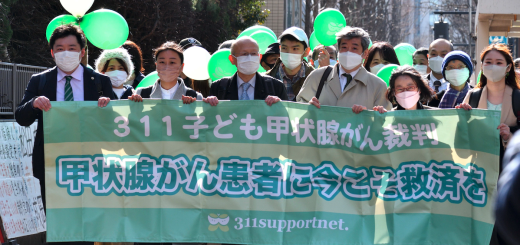CNIC Statement: The national government should withdraw its appeal on the Ohi NPP ruling and accept the Osaka District Court’s decision
21 December 2020
On December 4, 2020, the Osaka District Court revoked the central government’s approval for the safety measures of Kansai Electric Power Company’s Ohi NPP No. 3 and No. 4 reactors. This decision is epoch-making. It effectively nullified the reactor installation permit the government had given to the utility. The government filed an appeal to a higher court on the 17th, aiming to have the decision overturned. This appeal is unjustifiable, and the rightful action for the government is to withdraw it.
The text of the Osaka District Court’s ruling closely examined the assertions of the plaintiff and defendant regarding each of the eight controversial issues. The court gave an especially scrupulous examination on the formulation of standard seismic motion, which is the most important factor in evaluating the safety of nuclear power plants, with respect to “seismic motion formulated with a hypocenter specified for the site” and “seismic motion formulated without a hypocenter specified.” The court ruled that the government had only examined the “uncertainties” that the empirical formulation equation involves, but had neglected to examine the possible variances from the formulation, whose examination is demanded in the Guide for the Evaluation of Standard Seismic Motion.
“When a seismic scale is calculated by means of an empirical formula that relates the scale with the length or area of the source model or with the size of displacement resulting from a single seismic activity of the model, the regulator must confirm that the applicable range of the empirical formula has been comprehensively examined,” states the Guide, established by the governmental Nuclear Regulation Authority (NRA). “The empirical formula only provides average seismic scales and the variances that the formula may entail must be considered.” The NRA did not consider such variances, contradicting what it had stipulated in the Guide. In court, the chief judge repeatedly encouraged the government, the defendant, to provide an explanation to leave no margin of misapprehension.
The formula of Irikura and Miyake, which was used to determine the standard seismic motion in this case, is purely empirical and merely provides an average relationship between two physical sizes. Actual observations include variances of reasonable size. For the examination of the variances, the Guide demands not only that the applicable range of the empirical formula should be comprehensively examined (the first sentence of the stipulation). The second sentence, which was added to the Guide after the 11 March 2011 earthquake, has the pragmatic meaning that seismic motion, or seismic moment, must be established in consideration of the different physical sizes that can be significantly greater than the average sizes calculated by the empirical formula.
The ruling states that there was no evidence that the NRA examined the variances the empirical formula involves and that while the second sentence of the stipulation demands an examination of whether a given amount of size should be added to the average size obtained by the empirical formula in consideration of the possible variances the formula entails, the NRA failed to assert or prove that it had performed such examination.
The government should accept this ruling and obey it without making excuses.

